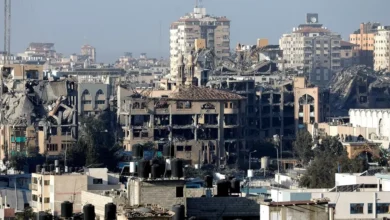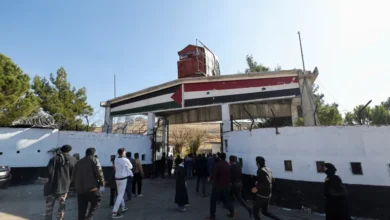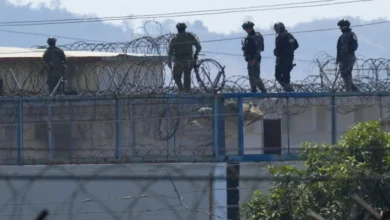Oil prices steady despite Middle East tensions, but risks are rising

In recent weeks, missile and drone attacks on cargo ships crossing the Red Sea have caused the biggest disruption to global trade since the COVID-19 pandemic. Despite delayed supplies, however, oil prices have remained surprisingly stable.
In response to Israel’s war on Gaza, Houthi rebels – the Iran-aligned Shia movement that controls northern Yemen and its western coastline – have launched a wave of assaults on ships in the Red Sea. By targeting vessels with perceived links to Israel, they are attempting to force Tel Aviv to stop the war and admit full humanitarian aid into Gaza. Houthis have launched at least 26 separate attacks since November 19 on merchant freighters.
Though no ships have yet been sunk, the United States recently dispatched a multinational naval task force to the region. On December 31, American Navy helicopters killed 10 Houthi fighters and sank three of the group’s speedboats.
The following day, Iran dispatched its Alborz warship to the Red Sea, compounding an already volatile situation. The government did not provide information on the vessel’s mission.
On Wednesday, Houthi rebels fired their largest barrage of projectiles yet, forcing an engagement with US and British naval forces. On Thursday night, the US and UK led a bombing campaign against multiple Houthi facilities in Yemen.
While Brent crude briefly topped $80 per barrel after Thursday’s air strikes, oil prices have mostly trended sideways in recent weeks. Market fundamentals suggest a balanced, or slightly surplus, market. And until there is a clear threat to global supply, traders appear to have relegated tensions in the Middle East to background noise.
The Suez Canal
Houthi activity has so far been concentrated in the narrow strait of Bab al-Mandab, which connects the Gulf of Aden to the Red Sea. Approximately 50 ships sail through the strait every day, heading to and from the Suez Canal – a central artery for global trade.
Some of the world’s largest shipping companies have suspended transit in the region, forcing vessels to sail around the Cape of Good Hope in Southern Africa. The lengthier route has raised freight rates due to higher fuel, crew and insurance costs.
“The region is an important channel for freight, representing almost one-third of global container capacity. As such, Houthi-linked bottlenecks pose a new risk to inflation,” said Rahul Sharan, a senior manager for maritime consultancy Drewry.
“We’ve seen hundreds of vessels rerouted from the Suez Canal in recent months. We don’t yet have visibility on which industries have been most severely affected, but [consumer goods] costs could rise if oil and gas prices increase.”
Despite diverting supplies from the Suez Canal, tensions in the Red Sea have so far had a muted impact on energy prices. “We’ve seen plenty of volatility, so geopolitical risks are being considered. But not enough to lift prices,” says energy trader Mohammed Yagoub.
“The truth is that headline fatigue has set in. There’s been a lot of coverage on tensions in the Red Sea, especially today. But global supplies have remained broadly steady in recent weeks,” Yagoub told Al Jazeera.
“You have to remember that the oil can still travel around Africa, as well as from ports in western Saudi Arabia, bypassing the need to cross Bab al-Mandeb.” The Houthis, he said, were also unlikely to attack ships from friendly oil and gas-producing countries in the region.
Tensions with Iran
There are other factors at play – recent record US production, the lifting of oil sanctions in Venezuela and tepid global demand, Yagoub added.
However, looking ahead, he warned that “tensions in Iran, especially around Hormuz, could move the needle on prices.”
Approximately 17 million barrels of crude oil, nearly one-sixth of global supply, are transported on a daily basis through the Strait of Hormuz, between the Arabian Gulf and the Gulf of Oman. If Iran became actively engaged in the conflict, Tehran could threaten to close this vital channel.
Any such closure could see crude prices surge by 20 percent in a month and higher thereafter, according to Callum Bruce, an analyst at Goldman Sachs.
“It would be a huge, huge shock. For now, though, the implied market probability of that happening is less than 1 percent,” he said. Tehran has appeared reluctant to engage in military conflict with the US military and its economy remains fragile.
Bruce pointed out that “oil traders will continue paying close attention to activity in the Middle East. Gaza is ground zero. Then, you have the Red Sea. Tensions across the region have also ratcheted up in recent weeks.”
On January 2, senior Hamas leader Saleh al-Arouri was killed in Beirut by an Israeli drone raid following three months of hostilities at the Lebanon-Israel border. It was the first air raid on Beirut since 2006.
This past week, Israel assassinated a Hezbollah commander in south Lebanon, while Hezbollah, which has Iranian support, struck a sensitive Israeli base with rockets. Meanwhile, Iran-backed groups in Iraq have stepped up attacks on US military bases.
For his part, US President Joe Biden has said he is keen to prevent the war on Gaza from spiralling into an all-out regional conflagration, though the bombing of Yemen has been viewed by the Houthis as an escalation. On Sunday, US Secretary of State Anthony Blinken was dispatched to the Middle East on a diplomatic trip for the fourth time in three months.
“Israel’s war with Hamas seems to have energised already existing tensions,” said Bruce. “And while US naval activity in the Red Sea provoked headlines, economic essentials are continuing to dictate oil prices.”
Mohammed Yagoub added, “It’s true that mega-trends are pre-occupying traders. But the likelihood of a regional conflict will increase the longer the fighting in Gaza persists. Yemen is proving that. So, you could make the case that oil traders are too sanguine right now.”










